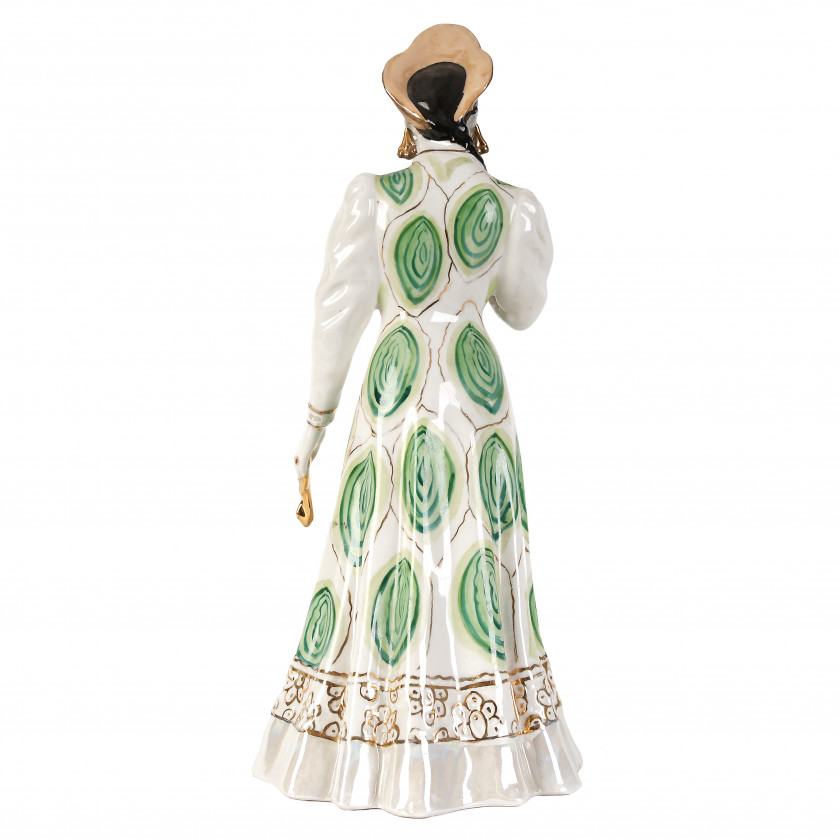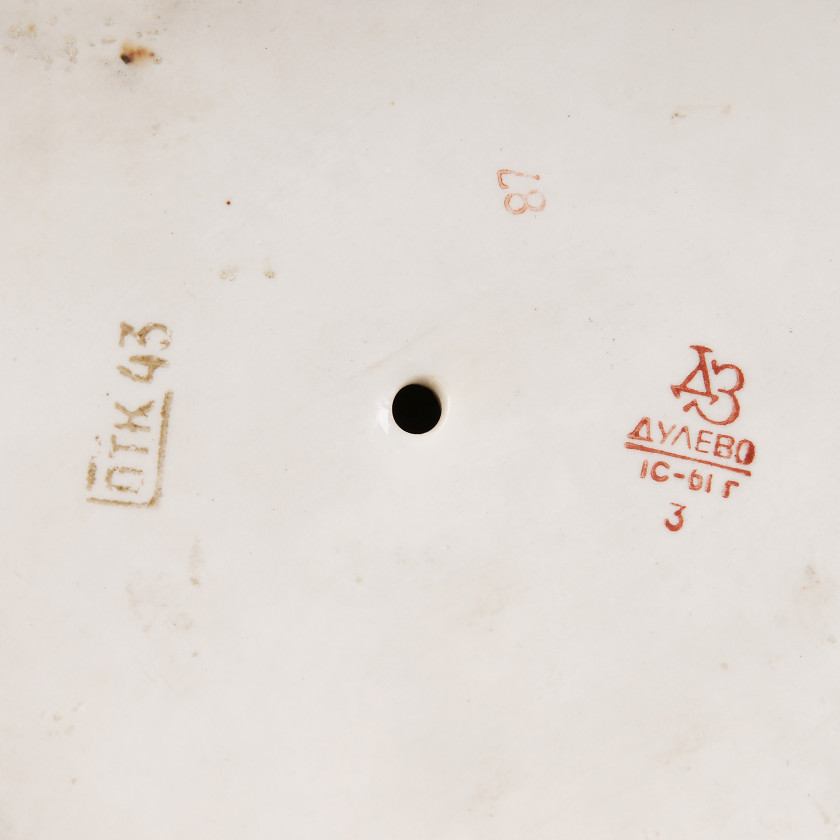Porcelain figure "Mistress of the Copper Mountain"
-
Item has been sold
Artist/Maker: Dulevo porcelain factory
Artist/Maker Dates: 1832 - present
Place of Production: Russia (USSR)
Date of Production: 1961
Materials: gilding, porcelain, underglaze hand painting
Height: 37.0 cm.
Description
The main Russian factory specializing in faience and porcelain in various forms is the factory in Likino-Dulyovo.
The town of Likino-Dulyovo is located in the Moscow region, and more precisely, in the Orekhovo-Zuyevo district. The start of production took place in 1832 on the initiative of the merchant T. Ya. Kuznetsov. Then the area where the enterprise was located was called Dulyovo wasteland. The status of the city, this territory received only in 1937. But already at the first stage, the factory of porcelain in Dulevo thundered literally all over Russia.
After 20 years, it has become one of the main centers of porcelain and ceramic production in Russia. Since 1864, MS Kuznetsov became the owner of the enterprise. When it manages to achieve the highest development in the XIX century. Attracted specialists and scrupulous study of the technology allowed to make products of impeccable technical characteristics. Since 1918, the company is on the next rise.
Already in the first years after nationalization, a cardinal reconstruction was under way, an adjacent factory of special paints was being created. The mechanization of all the workshops begins and ends fairly quickly. Since 1932, an art laboratory. For 15 years (1918-1932) it is possible not only to cope with the initial difficulties, but also to cut off the peak issue of 1913 by 3 times.
But this was only the beginning of the path of the enterprise. In the 1930s, attention was paid not only to the quantity of products, but also to their artistic performance. It is possible to achieve a qualitatively new aesthetic level (which was also reflected in the exposition of the factory museum). Forever in the history of Likino-Dulyovo then entered such names as P. V. Leonov (painting), Mukhiguli and Strochilin (original forms of containers). Sculptures and small figures Sotnikova, Kozhin, Bogdanova also became a very remarkable achievement at the time.
Well-known painters and sculptors collaborated with the factory at that time. Its products were highly valued abroad, handing even the gold medals of world exhibitions. In the late 1930s, a transition to a new style of painting, expressing more emotions, is planned. For obvious reasons, the updated concept was fully realized only in the 1950s. Again it is worth noting the contribution of the legendary Leonov, and in particular, his sign set "Golden Deer".
In the 1950s, Likino-Dulyovo actively mastered the new approach - borrowing motifs from old Russian folklore and the use of classical ornaments. Preference was given to a contrasting palette of bright colors.
Experienced artists and sculptors continue to be involved in the collaboration. In the 1960s, another decorating trend appeared. Some decorators tried to shade white porcelain surfaces with soft pastel painting.In this approach, both golden strokes and simple geometry were used.
The 1970s are accompanied by the use of etudes with natural landscapes, with field plants. In 1991, the plant was privatized, and a production cooperative was formed. But in new realities, porcelain from Likino-Dulyovo is losing its former popularity. Demand for products quickly fell, and by the beginning of the 2010s, the plant dragged out a miserable existence. Only feverish efforts and accelerated reconstruction (with the abandonment of outdated and insufficiently economical equipment) made it possible to save the enterprise from complete collapse.
Simultaneously with the completion of the reconstruction, in the late autumn of 2014, the factory museum opens. It exhibits the unique works of many famous creators. Starting from 2015, the Renaissance is on, and the number of marketed products is increasing annually. True, it is unclear exactly when the previous production records will be covered.
Shipping details
- Log in to see the cost for shipping this lot to your address.
Shipping methods are determined by item size, type, fragility and specific characteristics.
Shipping costs are calculated based on carrier rates, delivery distance and packing complexity.
Payment details
Doma Antikvariāts accepts the following payment methods:








